On June 30, the Solana spot staking ETF launched in collaboration with REX-Osprey was approved and will officially start trading on July 2, this Wednesday. This is the first cryptocurrency ETF in the U.S. market that includes on-chain staking yields. Following the announcement, the price of SOL surged nearly 6%, briefly breaking through $160, and is currently reported at $154. Previously, several well-known institutions had submitted SOL ETF applications that remained unapproved, while an obscure company managed to "clear the hurdles" first.
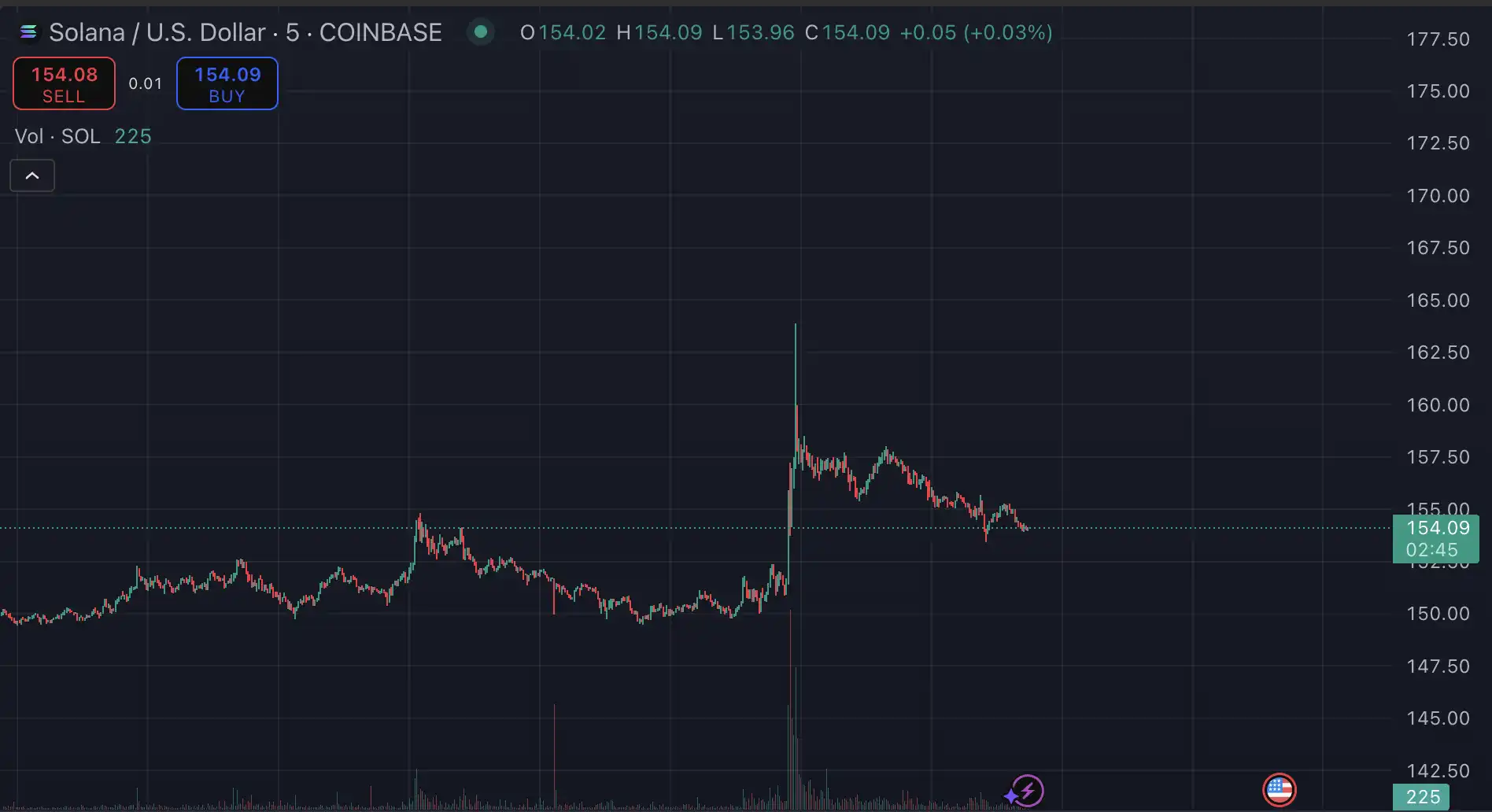
What makes the REX-Osprey ETF, which was the first to "cross the line," different? Which companies and assets in the U.S. stock market are betting on the Solana ecosystem and becoming investment targets for the SOL concept?
Obscure Company Breaks Through First: REX-Osprey's SOL Staking ETF Launches
Among numerous ETF issuance applications, the first to make substantial progress is the SOL staking ETF launched in collaboration between REX Shares and Osprey Funds. Compared to the Wall Street giants that have struggled to get approval for Bitcoin and Ethereum ETFs, these two companies appear relatively low-key. However, it is this "dark horse" that has first secured regulatory approval, launching the REX-Osprey SOL+Staking ETF, becoming the first staking yield cryptocurrency ETF in the U.S.
REX Shares is an innovative exchange-traded product (ETP) issuer based in Connecticut, known for launching alternative ETFs such as leveraged, inverse, and options strategies. Osprey Funds focuses on crypto asset management and has previously launched products like the Osprey Bitcoin Trust (OBTC). In this collaboration, REX Shares leads product design, structure building, and regulatory registration, while Osprey Funds provides crypto asset custody, staking execution, and asset management support.
Traditional ETF application institutions like VanEck, 21Shares, and Bitwise, which are registered investment companies under the 1940 Act, typically adopt traditional trust or simple spot ETF structures, meaning they only hold spot SOL without participating in on-chain staking. Therefore, the net asset value of the fund solely depends on SOL price fluctuations, with no additional sources of income. Regulatory approvals often focus on whether staking activities involve additional risks or management challenges, making it difficult to obtain approval.
According to the issuer, the fund adopts a C-Corp (ordinary C corporation) structure that can hold spot SOL and engage in on-chain staking to generate income and incorporate it into the fund's assets. However, this means that the ETF does not enjoy the "tax-exempt status" typically granted to ETF funds and must pay corporate income tax. This structure had previously faced regulatory scrutiny, but the REX team updated the prospectus and addressed the SEC's concerns, ultimately receiving feedback of "no further objections."

The SEC's prospectus mentions that the fund is classified as a "non-diversified" fund.
For future investors in REX-Osprey, they can conveniently hold SOL spot positions through the ETF. The prospectus also states that the fund will stake at least 50% of its held SOL, entrusted to blockchain validators by the custodian to generate on-chain yields, thus also obtaining an annualized staking yield of around 7%.
The prospectus also mentions some related risks; the fund is an income-enhancing ETF rather than a passive index ETF. Therefore, although SOL is the reference asset, the fund will not perfectly replicate SOL's performance, as it may also include other SOL-related ETFs, fluctuations in staking rewards, trading fees, staking lock-up periods, liquidity management fees, and other factors that could lead to returns not aligning with SOL prices. Although structurally, it may seem that for Solana, it is more about "sucking blood" than "inflow," for institutional funds optimistic about the Solana ecosystem but struggling with compliance tools, this undoubtedly opens a door.
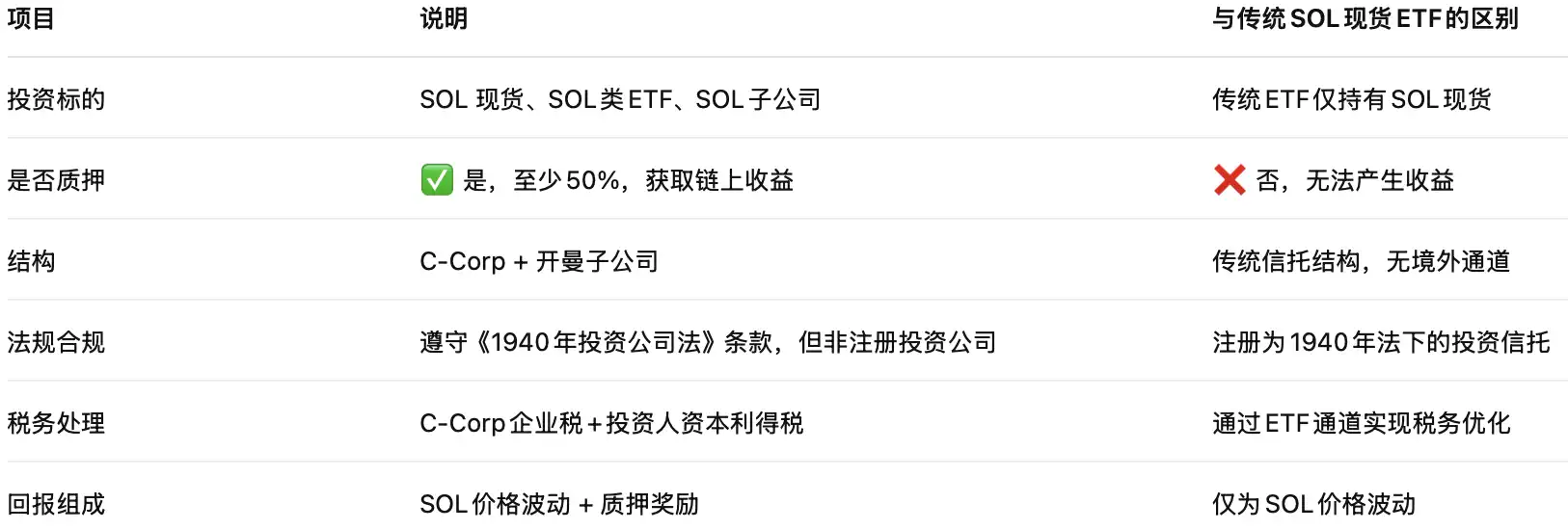
Overview of U.S. Companies "Hoarding SOL": Who is Playing the Role of Solana's MicroStrategy?
With the launch of the SOL ETF, many investors are turning their attention to "SOL concept stocks" in the traditional stock market. In fact, several U.S. publicly listed companies have boldly announced this year that they will incorporate Solana into their financial strategies, even using SOL tokens as core reserves on their balance sheets.
DeFi Development Corporation (Ticker: DFDV)
DeFi Development Corporation can be considered one of the purest Solana concept stocks in the U.S. market. Originally named Janover, the company once operated a real estate financing platform but decisively transformed under the leadership of former Kraken Chief Strategy Officer Joseph Onorati in April this year. They cleared out their existing business and went all-in on Solana. DFDV has established a strategy of accumulating and compounding SOL as its main financial reserve and has rapidly begun to buy SOL in large quantities. On May 12, the company made a one-time purchase of 172,000 SOL, bringing its total holdings to over 600,000, valued at more than $100 million, which accounted for about one-third of the company's market capitalization at that time.
DFDV is not satisfied with passive holding; it is also actively building Solana infrastructure. In early May, it acquired a Solana validator node business for $3.5 million, integrating itself into the "core of the network." Subsequently, it collaborated with the popular Solana meme coin Bonk to co-build validator nodes, jointly increasing the amount of delegated SOL and sharing staking rewards. As a result, DFDV became the first publicly listed company to operate Solana nodes and hold liquid staking tokens (LSD), achieving secondary asset appreciation. Since rebranding in early April, DFDV has skyrocketed over 30 times in two months. By mid-May, the stock closed at a historic high of $156.99, with a year-to-date increase of up to 3133%.
SOL Strategies Inc. (Canadian Securities Exchange Ticker: HODL, U.S. OTC Ticker: CYFRF)
Another noteworthy company is SOL Strategies Inc., headquartered in Canada. The company was formerly known as Cypherpunk Holdings, which primarily focused on blockchain and privacy technology investments (the name itself implies "hoarding coins"). After the new CEO Leah Wald took office in September 2024, the company was decisively reshaped into a "Solana ecosystem investment company," rebranding as SOL Strategies and viewing the Solana token SOL as a core asset for accumulation.
According to the company's financial report, its own SOL holdings grew from zero to over 239,000 SOL in just six months, while gradually liquidating its Bitcoin holdings (from 215 to just 3), reflecting a complete shift in strategic focus. SOL Strategies not only buys coins for itself but also helps others "manage coins": the company operates multiple high-performance Solana validator nodes and actively attracts third-party delegated SOL for staking. By March of this year, the total staking scale of the validator nodes operated by the company had reached 1.65 million SOL, with approximately 240,000 SOL being its own, while the rest were ecological delegations, averaging an annualized yield of around 7%.
To further expand its strategy, the company announced on April 23 that it had reached an agreement with ATW Partners to establish a convertible bond financing mechanism of up to $500 million, with all proceeds used to purchase and stake SOL. This financing structure is quite innovative: the first batch issues $20 million in bonds, with subsequent batches drawn based on conditions, and the interest is directly paid with SOL staking rewards (investors can receive 85% of the staking rewards). This can be understood as investors providing USD funds, the company buying SOL to stake, and then returning most of the staking output SOL to investors as interest. This design cleverly links bond interest with crypto asset yields, achieving a win-win situation. It is reported that SOL Strategies is also preparing for a Nasdaq listing—if successful, it is expected to become the first pure Solana ecosystem company listed on Nasdaq.
Classover Holdings, Inc. (Nasdaq Ticker: KIDZ)
Next is Classover Holdings, Inc., which has emerged this year as a company primarily focused on online children's education, originally having no connection to the crypto concept. However, in early June, Classover suddenly announced plans to establish a Solana treasury reserve program. The company signed an agreement with Solana Growth Ventures to issue up to $500 million in senior secured convertible notes to purchase SOL tokens and hold them as fiscal reserves.
According to the announcement on June 2, Classover had already purchased 6,472 SOL (approximately $1.1 million) as a starting point and planned to invest 80% of the financing proceeds into purchasing SOL. Following the announcement, Classover's stock price surged the next day (June 3), with a maximum increase of 46% during the day, closing at $5.45.
Upexi, Inc. (Nasdaq Ticker: UPXI)
Upexi, Inc. (Nasdaq Ticker: UPXI) is a consumer brand company that announced in April this year that it would raise $100 million specifically to establish a Solana financial reserve, with 90% of the funds allocated for purchasing and staking tokens. Crypto investment firm GSR participated as a lead investor in Upexi's private placement. The market reaction was equally explosive; after the announcement, Upexi's stock price skyrocketed over six times in just a few days. Although it has since retreated to around $3, Upexi has made several moves recently.
On June 26, Upexi announced that it would leverage the Opening Bell platform to tokenize its SEC-registered shares and deploy them on the Solana network. In the past month, Upexi has added approximately 56,000 SOL to its holdings, bringing its total Solana holdings to 735,692 SOL, valued at approximately $10.5 million at current prices. With the news of the ETF and Robinhood and Kraken launching on-chain "U.S. stock" products, Upexi's stock price surged 15% today.
Additionally, some traditional companies have begun to embrace Solana strategies. For example, the Australian-listed blockchain investment company DigitalX (ASX: DCC) announced in May that it had increased its Solana holdings to 83,150 SOL, all of which would be used for staking, expecting an annual yield of 7-9%, which could bring the company about AUD 350,000 in additional income each year. DigitalX stated that compared to passive Bitcoin holdings, holding Solana allows them to "participate in the rapidly growing blockchain ecosystem while obtaining stable returns," transforming the company's assets from dormant to income-generating.

Solana offers a more "productive" asset choice than Bitcoin. The substantial yields generated through staking, as calculated by DigitalX, indicate that at the current annual staking return rate of 7-9%, their SOL holdings could generate hundreds of thousands of dollars in income for the company each year. Under a compliant structure, SOL as an asset resembles a stock that pays dividends for the company.
Hotspots in the Solana Ecosystem: Investment Opportunities in DEX and Staking Derivatives
In addition to concept companies in the stock market, Solana's own on-chain ecosystem projects have also become the focus of speculative funds. In particular, the DEX and staking derivatives (LSD) sectors have surged following the ETF approval news.
Raydium (RAY)
One of the oldest decentralized exchanges in the Solana ecosystem. It remains the deepest and most widely used DEX platform on the chain, with over 55% of Solana's on-chain transactions (via the aggregator Jupiter routing) ultimately settled on Raydium. With its deep liquidity pools, Raydium competes with Uniswap among all blockchains' DEXs, sometimes even briefly surpassing the latter in trading volume. Raydium's platform fees are also used for regular token buybacks and burns, having repurchased over 10% of the total supply, significantly reducing selling pressure. As Solana's trading activity increases, the RAY token often benefits first.
Following the ETF news and other positive developments like XSTOCKS, the price surged 6% in a short time, breaking through $2.20, and has now retreated to around $2.10.
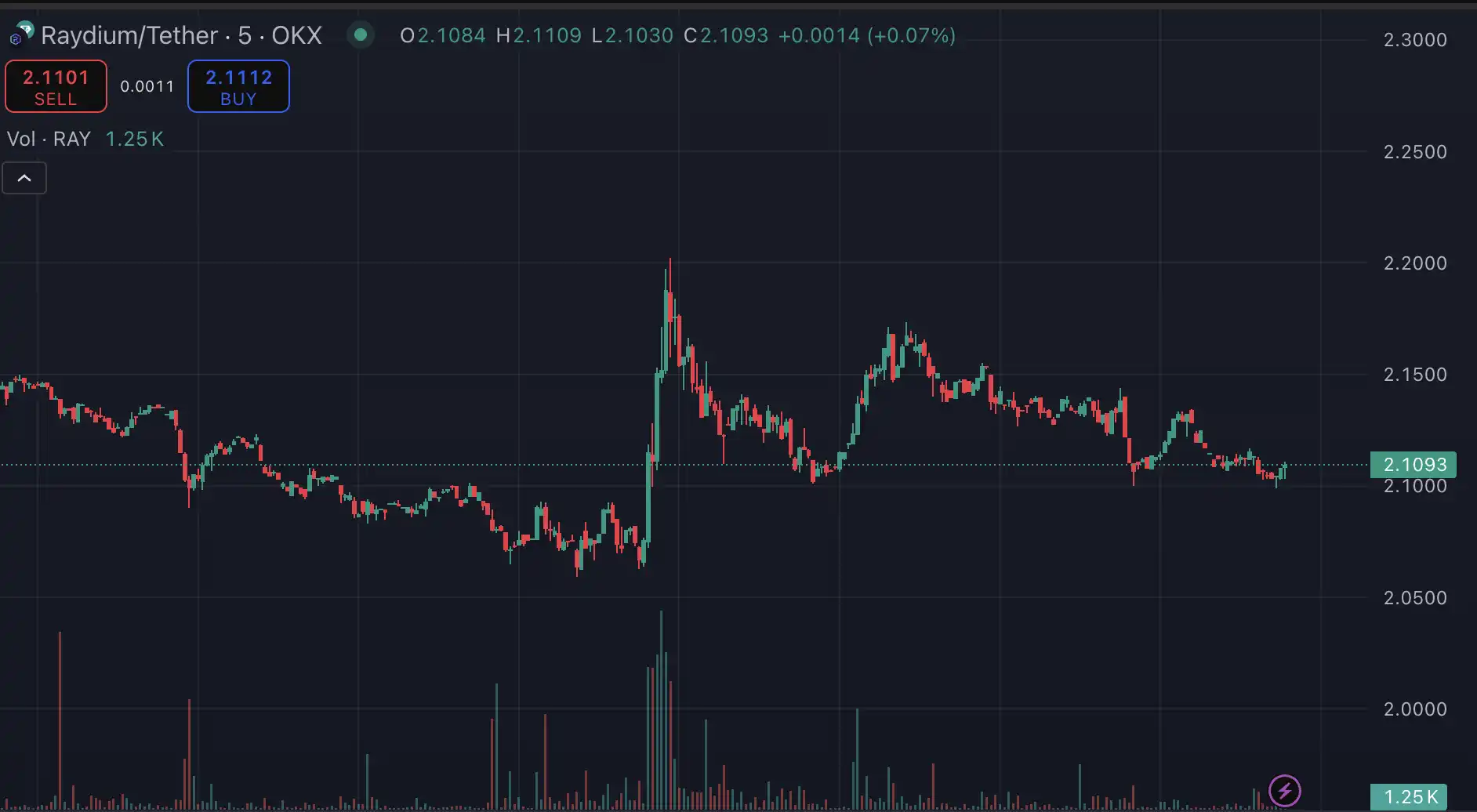
Jupiter (JUP)
The leading trading aggregator on Solana and one of the key infrastructures of the entire network. Jupiter aggregates liquidity from multiple DEXs, such as Raydium and Orca, providing users with the best trading paths and prices, making it the preferred entry point for Solana users to conduct swap transactions.
Data shows that Jupiter guides 50-60% of the network's trading volume, and if we exclude bot traffic, over 80% of organic trades are completed through its frontend. It can be said that Jupiter's importance to Solana is even greater than that of 1inch to Ethereum, as the low-fee environment on Solana makes the cost of aggregating split trades almost negligible, allowing Jupiter to fully leverage its aggregation advantages.
Similarly, following the ETF news and other positive developments like XSTOCKS, the price surged over 9% in a short time, breaking through $0.48, and has now retreated to around $0.45.
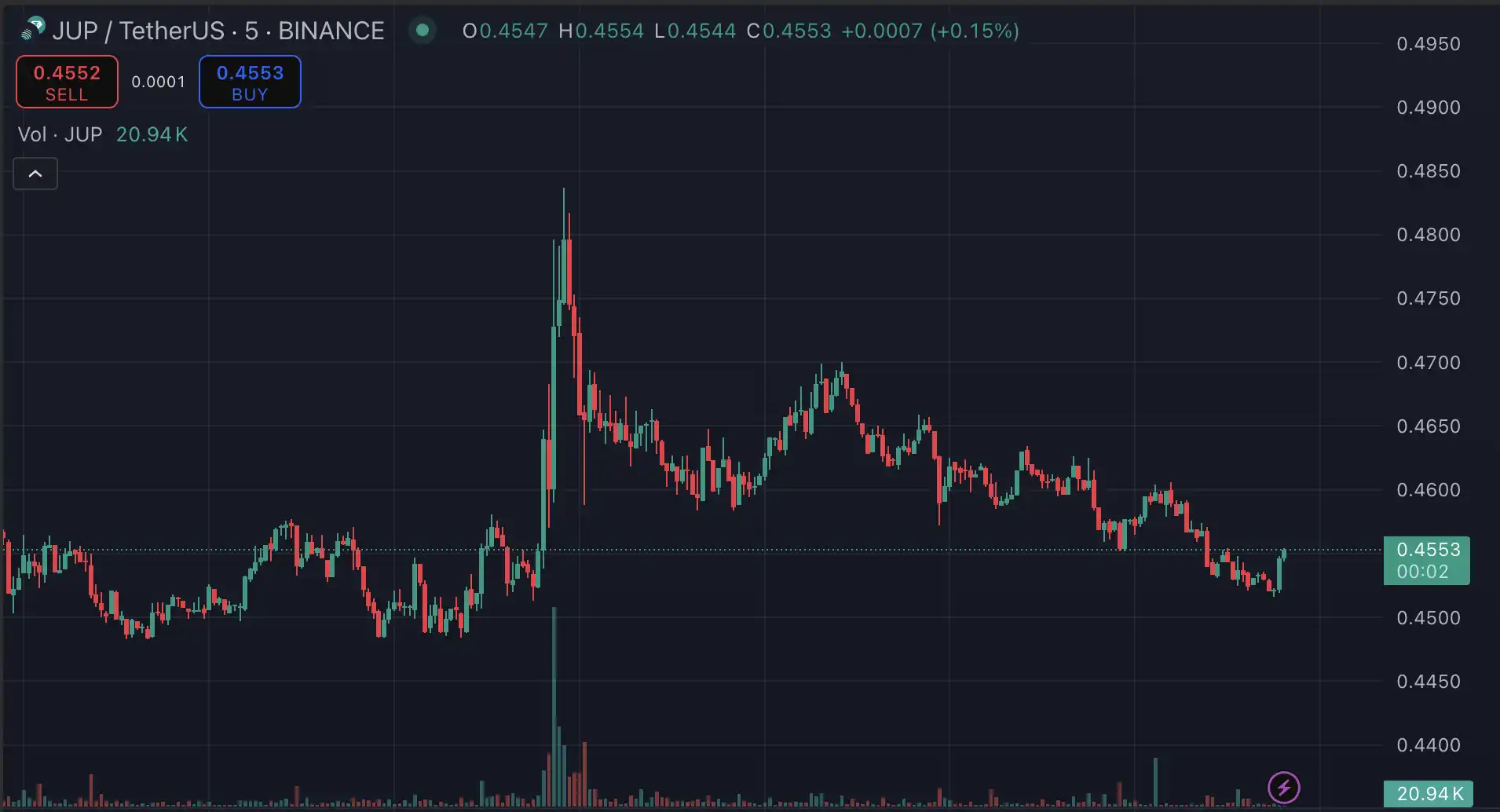
Jito (JITO)
A newcomer in the Solana ecosystem's liquid staking protocol and currently the leading project in this sector. After Lido exited the Solana market, Jito quickly rose to prominence, launching an airdrop plan in September 2023 and subsequently dominating the sector.
The total value locked (TVL) in the staking derivative tokens (such as Jito-SOL) provided by Jito has reached $1.705 billion, making it the largest protocol in terms of locked assets within the entire Solana ecosystem. Jito's advantage lies in its staking scheme that incorporates MEV (Maximum Extractable Value) gains, enhancing validator returns, making it highly attractive to institutions and large holders. In May of this year, Nasdaq-listed DFDV announced the purchase of liquid staking tokens produced by Jito, setting a precedent for publicly listed companies holding LSD, further proving the value of this sector. The JITO token, as the protocol's native token, may share profits through staking distribution mechanisms in the future. As more SOL holders seek to improve capital efficiency, Jito is expected to continue attracting incremental funds, and the JITO token is viewed as one of the potential targets for the next phase of the Solana ecosystem.
Clearly, with DFDV's experience as a lesson, the market naturally associated this protocol with Solana's "functional ETF" approval, and JITO also saw a short-term increase of around 14% after the news, briefly breaking through $2.49 but subsequently declining, currently quoted at $2.14.
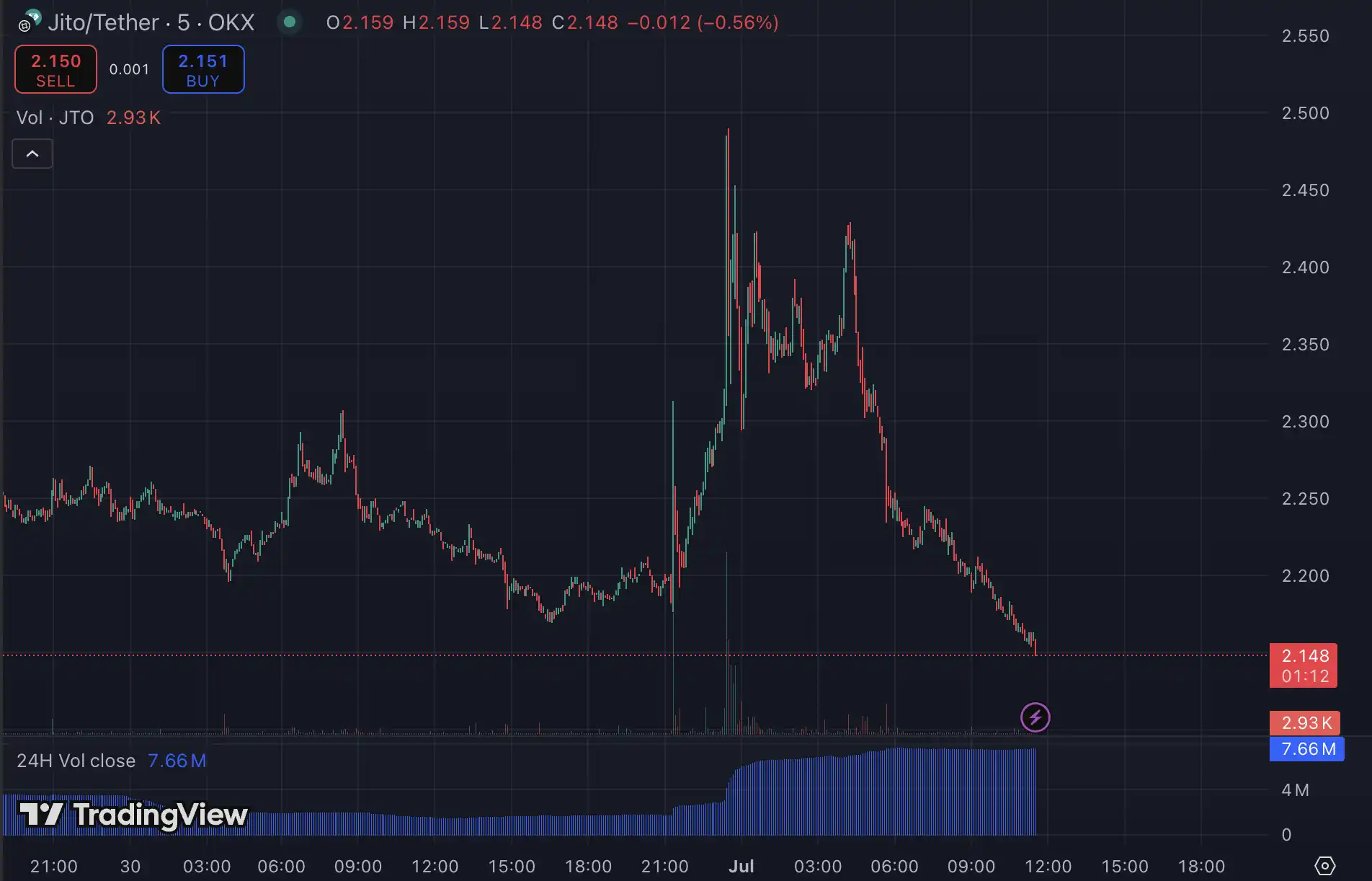
Overall, in the context of increasing interest in the Solana ecosystem, infrastructure projects are the most benefited. Trading protocols directly share the fee growth brought by trading booms, while staking protocols accommodate the surge in staking demand driven by institutional entry. As more traditional capital flows into SOL through ETFs and publicly listed companies, there will be more opportunities for value capture on the Solana chain.
免责声明:本文章仅代表作者个人观点,不代表本平台的立场和观点。本文章仅供信息分享,不构成对任何人的任何投资建议。用户与作者之间的任何争议,与本平台无关。如网页中刊载的文章或图片涉及侵权,请提供相关的权利证明和身份证明发送邮件到support@aicoin.com,本平台相关工作人员将会进行核查。




